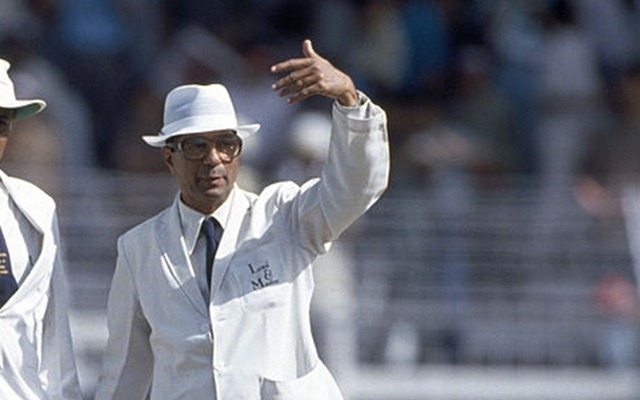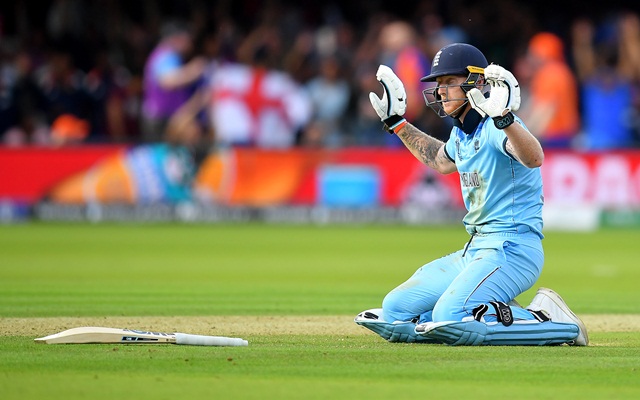Former Indian umpire who stood in the 1992 World Cup explains the ‘deflection controversy’
He also talked about the rule used to determine the winner when the Super Over also ended in a tie.
2 Min Read


In the final of the ICC Cricket World Cup 2019, there were a few variables which went England’s way. The ‘deflection controversy’, though, has stood out among other debates. A throw from Martin Guptill deflected off Ben Stokes’ bat and went straight to the boundary – for that, England were awarded six runs when nine were needed to win. With three balls remaining in the nail-biting final over they now needed just 3 runs to win.
Scores were level at the culmination of 100 overs, and in the resulting Super Over, the scores were tied once again. But England won their first-ever World Cup victory for their superior boundary count in the match. However, following the game, there have been claims of a major umpiring howler in the final over. England had to be awarded five runs for the deflection, but they were erroneously awarded six. The standing umpire was Sri Lanka’s Kumar Dharmasena.
Third umpire could’ve been consulted
Piloo Reporter, India’s first neutral Test umpire since 1912, who was also the only Indian to be selected for the 1992 World Cup in which he stood in seven games, explained the error. Speaking to CricTracker, the octogenarian said, “When the fielder throws the ball, it is very important for the umpire to check whether the batsman has crossed the line or not.
If he has not crossed at the instant of the throw, then the number of runs should be five. If he crossed, it should be six. In case of the final, footages suggest that the batsman had not crossed the line, which the umpire failed to notice and the advantage of a third umpire was also not taken,” Reporter said.

Reporter, who stood in 14 Tests and 22 ODIs, also pointed out how the noise from the crowd is a big distraction for umpires.
“Umpiring howlers during the long cricket season in 2019 have been several, but it depends on each individual’s concentration. If 40,000 to 50,000 spectators make noise, especially in high profile World Cup games, the umpires have a difficult time. It is not a good idea to increase the use of the third umpire because then every time cricketers will ask for it. It will get messy.
But to avoid these howlers, which are turning the entire fate of the game, each team should be given two DRS calls in ODIs instead of one,” the former Indian umpire said.
Rule change possible before next World Cup
In the thriller that the hallowed Lord’s turf witnessed on Sunday, New Zealand posted 241/8 in 50 overs and the hosts finished with exactly the same total after which the Super Over came into play. England scored 16 runs in the tie-breaker over and New Zealand repeated the same.
England was awarded the game as well as the World Cup title as they had hit more boundaries during the match — 26 while New Zealand finished with 17. That the boundary count was used as a decider for the winner is a rule that is being slammed by many. But Reporter reckons that the players signed up for the play only after acknowledging the rules.
“The players were aware of the rules when they agreed to play the World Cup. So you cannot really blame the rule. But well, ICC will be meeting another three to four times before the next World Cup and they will decide if the total boundary count rule should continue or be scrapped. But well, don’t be surprised if the new rule is – the team that hits more number of sixes wins! (laughs).”
Download Our App